Cambodia Landmine Museum, Siem Reap
Cambodia Landmine Museum
“The landmine is eternally prepared to take victims. It is the perfect soldier.” — Jody Williams, Nobel Peace Prize winner and founding co-ordinator of the International Campaign to Ban Landmines
Every now and again, an experience deeply moves you, and changes the way you think about life. The Cambodia Landmine Museum did that for me.
After visiting the Banteay Srey Butterfly Centre, located just 25 minutes from Siem Reap, we stopped into the landmine museum, which was closeby. What started with a few fun photos with some large defused bombs lining the entrance, ended in a very sombre and even sad journey into Cambodia’s history.
As soon as you enter the Cambodia Landmine Museum, to the right you can pick up a pair of headphones, so you can have a recorded tour, for free (highly recommended). On the left of the entrance, you’ll see the below whiteboard. It lists the needs of the centre, to help the young landmine victims and orphans they take care of. If you plan to visit, please take any of these things with you:
As you continue through the museum, you’ll see this big structure full of defused landmines on display. There are signs explaining the origin of the landmines, for example the US, Russia or Germany, as well as what specific purposes each landmine or weapon was used for.
To the left, there is a room which contains more displays of weapons, and facts about landmines.
Here we learned some interesting facts:
- Anti-personnel mines first became extensively used during World War II
- They were initially developed to protect anti-tank mines being removed by enemy soldiers
- Mines were designed to maim and not kill, because it meant more resources were spent caring for wounded soldiers. They believed that a dead solider was cheaper and easier than an injured one
- The use of landmines became pervasive. They were eventually used to terrorise communities and civilians, in order to deny access to farming land and to restrict movement
- Marking and mapping landmines became increasingly difficult, especially as technology developed and mines were delivered via air
- It’s believed to cost just $1 to make a mine. But locating one and destroying it can cost in excess of $1,000.
- While many nations have stopped production and trade of mines, 13 countries continue — 9 of which are in Asia.
Probing by a skilled de-miner is the most effective way of detecting landmines:
It’s here where the images start pulling at your heartstrings, as you read about the realities of life for the affected Cambodian people. I don’t know any parent who wouldn’t be moved by this.
The next room contains more facts and the impacts of life for the Cambodia people.
It’s here we learned:
- Cambodia has more than 45,000 landmine victims
- Every month, there are 120 new victims
- It costs $5 to purchase a mine, but $500+ to clear and destroy one
- 100-200 million mines are currently laid and activated around the world
- 52 countries are mined
Probably the most moving section for me was the room which presented the children’s experiences. Artwork hangs from the roof – painted square frames. On the inside, it represents their past and their experiences. On the outside, it represents their hopes and dreams for the future.
They were accompanied by stories which had me holding back tears.
Sot Vital’s story read:
“We were very young and didn’t know about the danger of mines as there were not so many in our area and our parents had not told us about this danger. My friends found a mine and picked it up because they thought it looked like a pineapple and wanted to play with it. I was quite a long way away from them, perhaps 20 metres. I didn’t know what they were playing with but a moment afterward the mine exploded. Pieces of mine hit my leg and I fell unconscious. When I woke up, I was in the hospital. My mother told me three of my friends had died and one lost her arm. When I heard about my friends dying I cried alot, and I cried even more because I lost my left leg.”
As a parent, I imagined my own children living with these distressing memories and experiences. Truly heart wrenching.
But, I don’t want to finish this piece on a sad note. The Cambodia Landmine Museum is doing such great work educating others, supporting victims and removing landmines from Cambodia. They have a display of non-live landmines, so people can see what an array of mines might look like, should you come across them.
An ex-child soldier, Aki Ra, is the museum’s founder. He had been suppressed into the Khmer Rouge army as a child. Following years of fighting, he courageously decided to return to the villages where he had planted thousands of mines. He began removing them by hand, before defusing them with homemade tools.
Aki Ra founded the Cambodia Landmine Museum in 1997 and currently spends around 25 days of each month removing landmines. It just goes to show you, just one person can make a massive difference to not only a community, but a whole country.
Visiting The Cambodia Landmine Museum
The Cambodia Landmine Museum is open from 7:30am to 5:30pm every day of the year. It’s 25 kilometres from town, and 7 kilometres south of the Banteay Srey temple. You do not need to pay for a temple pass to see the Cambodia Landmine Museum. You will go past a checkpoint, but you should not have to pay.
Entrance into the Cambodia Landmine Museum costs $5 USD for an adult, and children 12 or under are free.
Of the $5:
- $1 goes towards efforts clearing landmines
- $1 goes towards support programs in local villages
- $3 is used to support the children who live at the museum, as well as paying the staff a fair salary
We paid $22 USD for a tuk tuk driver for half the day, to visit two locations.
You’re not allowed to visit the school or see the children, as the government has been shutting down orphanages for turning them into tourist attractions. But you can apply to volunteer at the museum and school, and you can also donate to the cause.
For more information, visit the Cambodia Landmine Museum website.
Kelly Bree Winder
In 2015 Kelly Winder travelled the world for 12 months with her three children and partner Doug, she hopes her stories inspire more families to do the same.

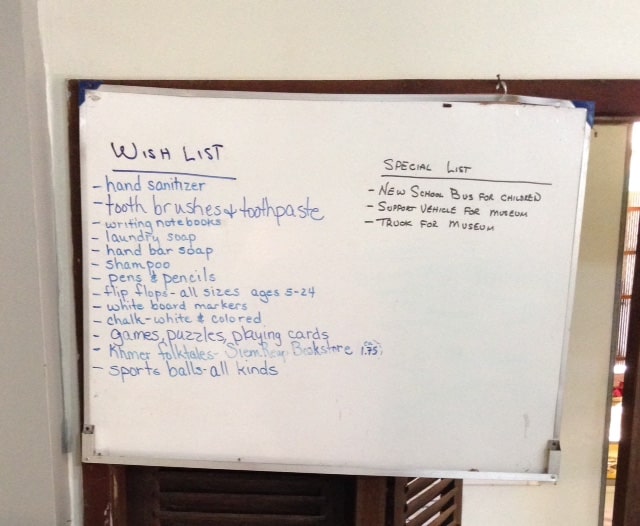
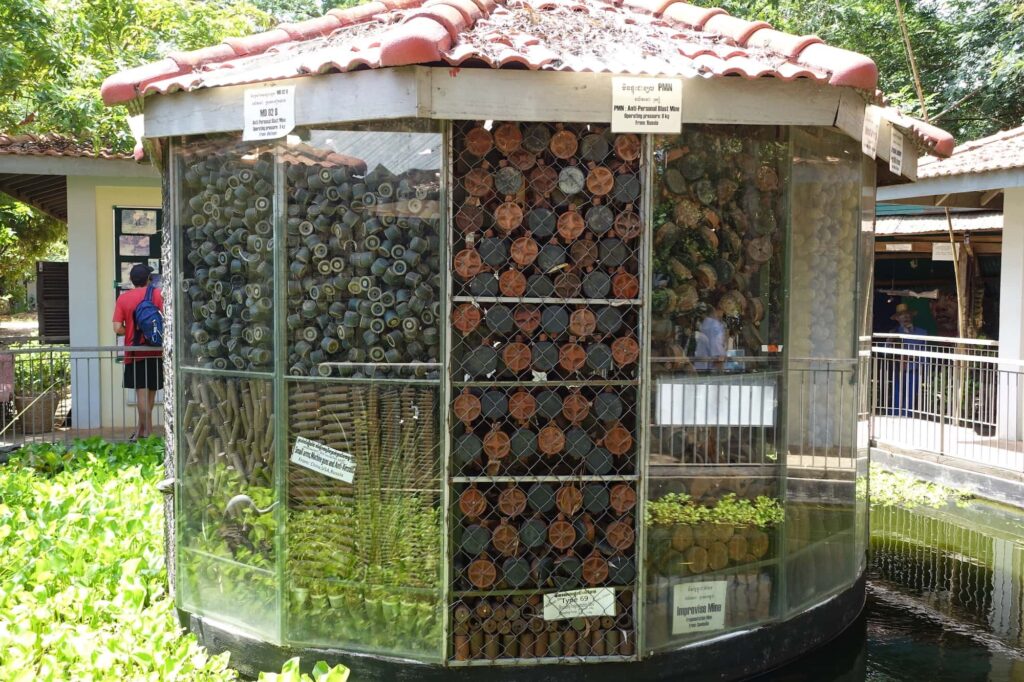


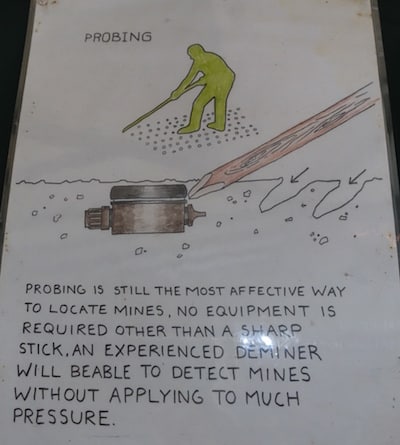

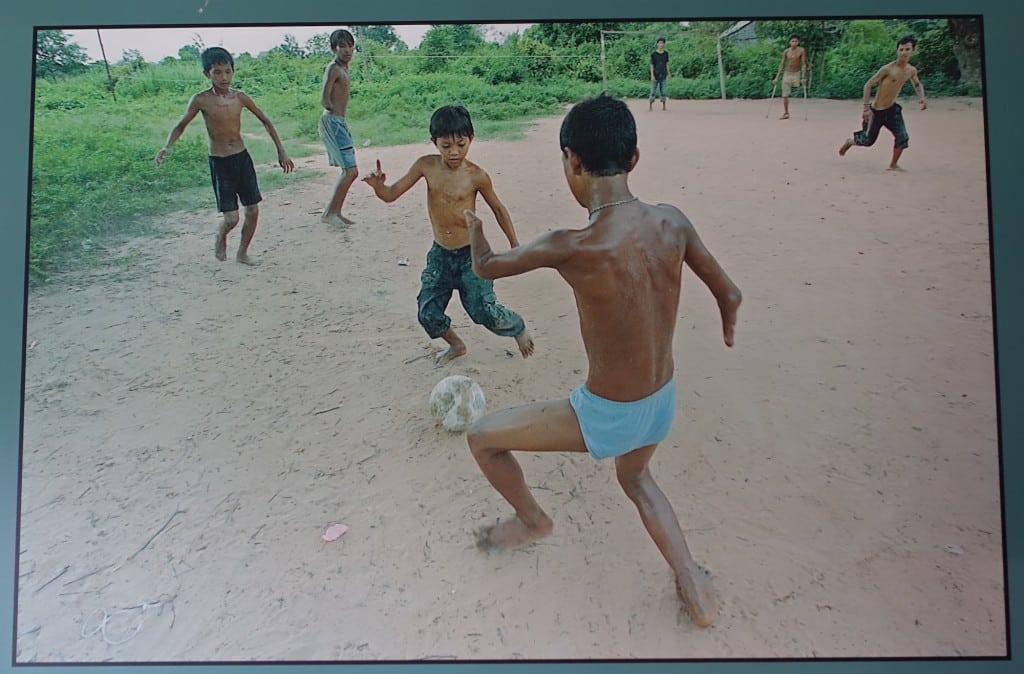

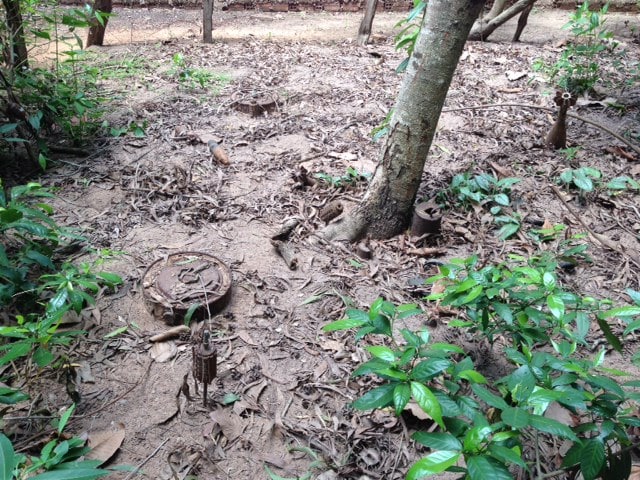




Hi Kelly, awesome write up bout the landmine museum. Be they next week in Phnom Pen n Siem Reap. Hope have chance to go visit. Cheers fr Malaysia.
Glad you enjoyed it! Thanks for the comment – you’ll love Cambodia 🙂